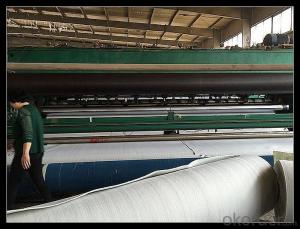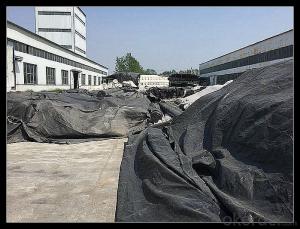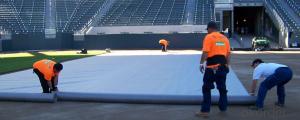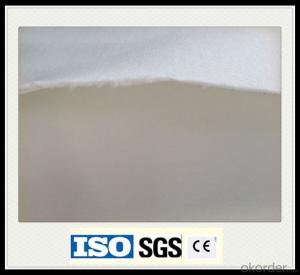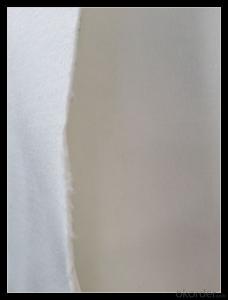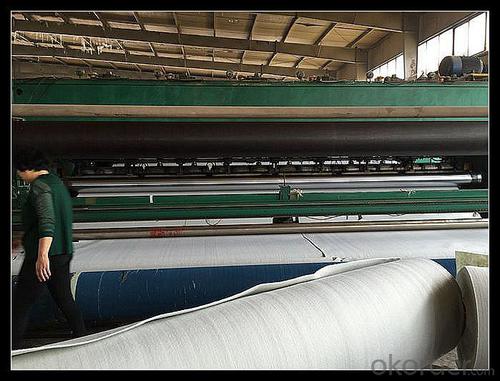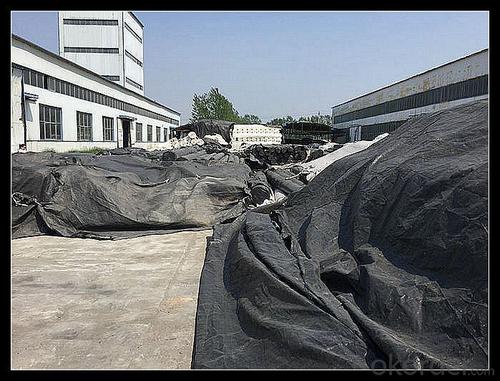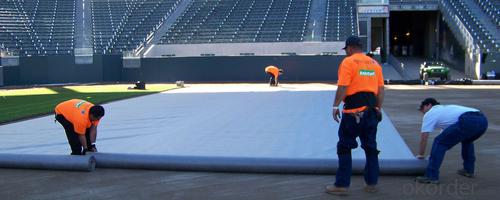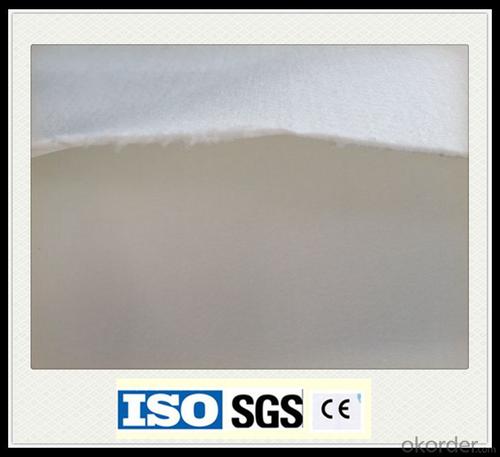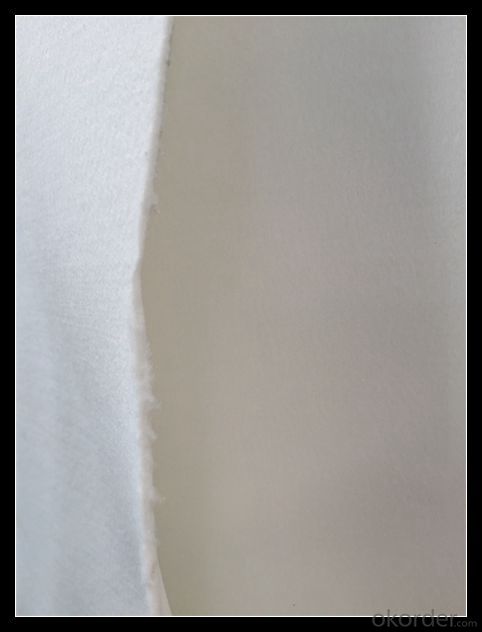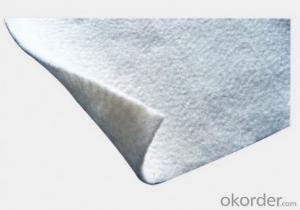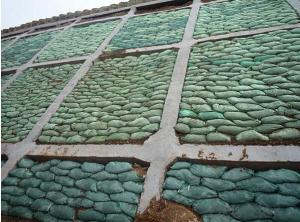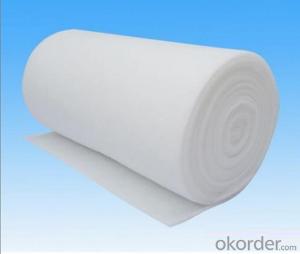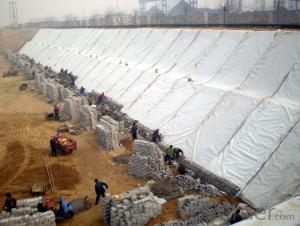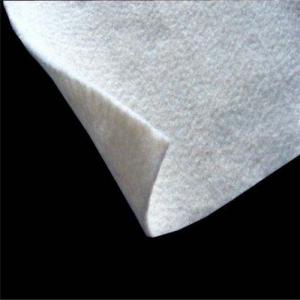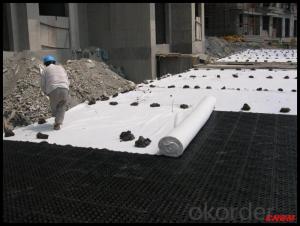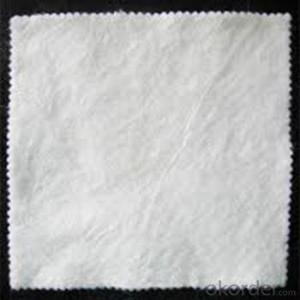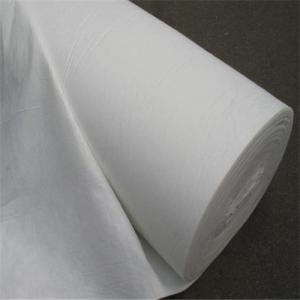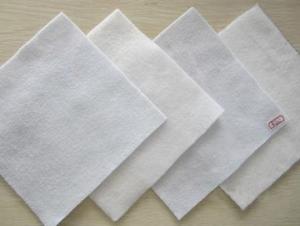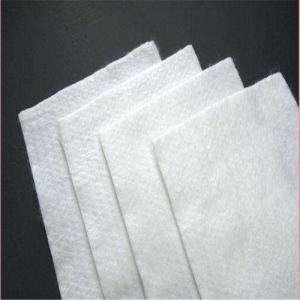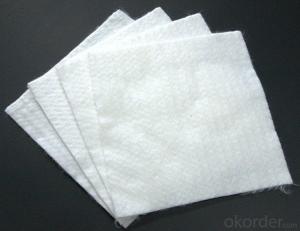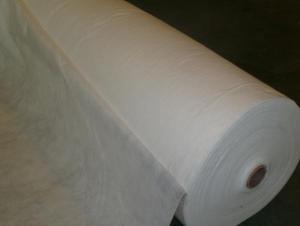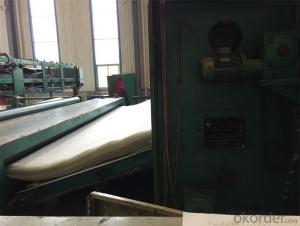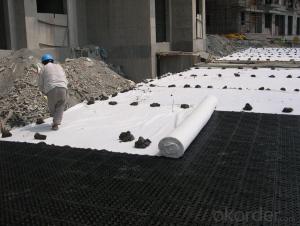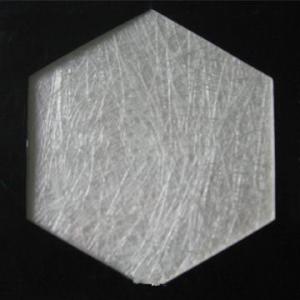Polypropylene PP Nonwoven Geotextile Fabric for Geotextile Fabric Under Asphalt Applications
- Loading Port:
- China main port
- Payment Terms:
- TT OR LC
- Min Order Qty:
- 1000 g/m²
- Supply Capability:
- 1000000 g/m²/month
OKorder Service Pledge
OKorder Financial Service
You Might Also Like
Specification
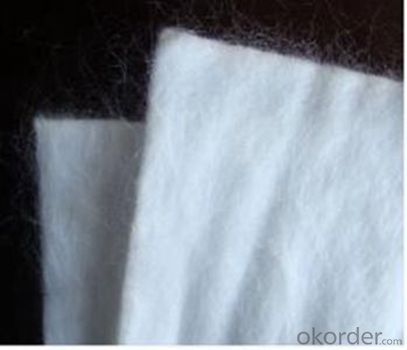
1. Geotextile Specifications
1) Weight / Mass: 100g/m2-1500g/m2
2) Width: Within 8 m (1m-8m)
3) Length: 50m-100m/roll (as request)
4) Material: PP / PET
5) Color: Black , white , grey and other color
6) Certificate: CE/ISO9001 , ISO14001
7) Manufacturing method: nonwoven / woven
8) The Biggest geotextile manufacturer/factory in China for many years
Color: Any colors available or customers colors
The main function of these geotextiles is to offer separation, filtration and primarily protection,
? Separation and stabilization in road and railway construction
? Prevention of soil movement in erosion control measures
? Cushioning and protection in many containment projects.
Quality assurance
1.On a regular basis or as per your request,we entrust national testing agencies to conduct quality inspections
2. Strictly in accordance with the ISO9001-2008 international quality system standard,we monitor and manage the whole process throughout production,quality testing,and measurement to ensure product quality
3. For quality-related construction delay or substandard construction(except for damage or losses due to customer’s responsibility or irresistible natural disasters),we have refunding,replacement,and repair services.We will respond to customers’ feedbacks on quality issues within 24 hours.
After-sales service
1.In order to provide customers with comprehensive technical support,we will provide technical and other related information upon request in a timely manner.
2.In required,we will appoint specialized technicians to the construction site to give technical trainings to construction people,and offer technical guidance throughout the whole construction process.
3.For damage due to shipment and delivery,after we receive the complaint,we will check the issure through provided pictures and videos.If our responsibility is confirmed,we wil offer free replacement.
4.When the construction is completed,as your request,our technical staff may participate in the final acceptance.
FAQ:
Q: What kind of payments does jenor support?
A: T/T, L/C, Cash are accepted.
Q: Do you charge for the samples?
A: Accordeing to our company policy, the samples are free, we only charge the freight fee. And we will return the freight fee during the next order.
Q: Can you produce according to customers' design?
A: Sure, we are professional manufacturer, OEM and ODM are both welcome.
Q: Do you have other products?
A: Yes, please check the pictures:
- Q: What are the key differences between woven and nonwoven geotextiles?
- The key differences between woven and nonwoven geotextiles lie in their manufacturing processes and physical characteristics. Woven geotextiles are made by interlacing yarns or fibers together to create a stable and strong fabric. On the other hand, nonwoven geotextiles are produced by bonding or felting fibers together without any weaving process. In terms of physical characteristics, woven geotextiles generally have higher tensile strength and puncture resistance due to their interlaced structure. They also offer better filtration properties as the open spaces between the woven yarns allow for effective water flow. Nonwoven geotextiles, however, have a higher permittivity, meaning they have a greater ability to allow water to pass through. Another notable difference is their durability. Woven geotextiles tend to be more resistant to UV degradation and offer better long-term performance, making them suitable for applications that require high strength and stability over time. Nonwoven geotextiles, although less durable, are often used for short-term projects or where filtration and separation are the main requirements. Overall, the choice between woven and nonwoven geotextiles depends on the specific application and desired properties. Woven geotextiles are typically favored for their strength and longevity, while nonwoven geotextiles are preferred for their filtration capabilities and cost-effectiveness in certain applications.
- Q: Differences between staple acupuncture nonwoven geotextile and filament spunbonded nonwoven geotextile
- Appearance of different shapes: staple acupuncture non-woven geotextile in the appearance of the surface of the fiber is shorter, and filament spunbond acupuncture non-woven geotextile surface fiber longer. Different materials: staple acupuncture non-woven geotextile with PET polyester staple fiber acupuncture, and filament spunbond acupuncture non-woven geotextile made of polyester chips. Production equipment and different technology: staple acupuncture non-woven geotextile is the polyester staple fiber through the mixing - clutter - comb - shop - acupuncture, and filament spunbond acupuncture non-woven geotextile is the polyester Sliced hot melt - spinning - carding - shop - acupuncture. Implementation of different standards: staple acupuncture non-woven geotextile implementation of GB / T-2008 standards, and filament spunbond acupuncture non-woven geotextile implementation of GB / T-2008 standard. The same specifications of filament spunbonded acupuncture non-woven geotextile quality is better than staple acupuncture non-woven geotextile. Price: the same specifications of polyester staple acupuncture non-woven geotextile price is lower than filament spunbond acupuncture non-woven geotextile.
- Q: How do geotextiles help with soil reinforcement in embankments?
- Geotextiles help with soil reinforcement in embankments by providing a stable and strong layer between the soil and the embankment structure. They act as a barrier, distributing the load evenly and preventing soil erosion and movement. Additionally, geotextiles enhance the overall stability and durability of the embankment by improving drainage and reducing the potential for soil settlement.
- Q: What are the factors that affect the effectiveness of geotextiles in erosion control?
- The effectiveness of geotextiles in erosion control is influenced by several factors. Firstly, the material and quality of the geotextile itself play a significant role. Geotextiles with higher tensile strength and durability are more effective in preventing erosion. Secondly, the design and installation of the geotextile are crucial. Proper placement and anchoring techniques ensure that the geotextile remains in place and functions effectively. The type and intensity of the erosive forces also impact the effectiveness of geotextiles. Factors such as water flow rate, soil type, slope gradient, and vegetation cover can affect how well the geotextile mitigates erosion. Additionally, the maintenance and regular inspection of the geotextile are important for its long-term effectiveness. Overall, a combination of material quality, proper installation, and consideration of site-specific conditions contribute to the effectiveness of geotextiles in erosion control.
- Q: What are the factors to consider when selecting geotextiles for a project?
- When selecting geotextiles for a project, there are several factors to consider. Firstly, it is important to assess the specific requirements of the project. This includes considering the expected load and stress that the geotextiles will need to bear, as well as the expected site conditions such as soil type and water flow. Additionally, the durability and longevity of the geotextiles should be considered, taking into account factors such as UV resistance and resistance to chemical degradation. The cost and availability of the geotextiles should also be taken into account, as well as any specific design or regulatory requirements for the project. Lastly, it is crucial to consider the manufacturer's reputation and the geotextiles' performance history through references and testing data. Overall, a comprehensive evaluation of project requirements, performance characteristics, cost, and availability will help in selecting the most suitable geotextiles for a project.
- Q: Are geotextiles suitable for use in rain garden systems?
- Yes, geotextiles are suitable for use in rain garden systems. Geotextiles can be used as a filter fabric to separate the soil and gravel layers in rain gardens, preventing clogging and promoting proper drainage. They help to retain water and nutrients while allowing excess water to flow through, making them an effective component in rain garden construction.
- Q: Geotextile geomembrane factory need to record, certificate, inspection report?
- Do not need to see if the time is not your company's chapter to know ah
- Q: Are geotextiles resistant to extreme weather conditions?
- Yes, geotextiles are typically designed to be resistant to extreme weather conditions. They are made from durable materials that can withstand harsh weather elements such as heavy rainfall, high winds, and intense sunlight. Additionally, geotextiles are engineered to be resistant to erosion, which further enhances their performance in extreme weather conditions.
- Q: Filament spunbond nonwoven geotextile performance requirements for what is the basic item
- Filament spunbond acupuncture non-woven geotextile is the implementation of the national standard GB / T-2008 standard. GB / T-2008 standard for filament spunbond acupuncture non-woven geotextile performance requirements of the basic items include: product vertical and horizontal nominal fracture strength (KN / m), vertical and horizontal nominal elongation at break (%) (KN), vertical and horizontal tearing strength (KN), mass per unit area deviation (%), width deviation (%), thickness (mm), vertical permeability coefficient (cm / s), equivalent pore size (O90 (95) / mm). Only the above indicators meet the corresponding GB / T-2008 standard requirements, be considered qualified filament spunbonded non-woven geotextile.
- Q: Permeable geotextile price how much
- See specifications, specifications are not the same indicators, the price is not the same, Huazhi geotextile material manufacturers
Send your message to us
Polypropylene PP Nonwoven Geotextile Fabric for Geotextile Fabric Under Asphalt Applications
- Loading Port:
- China main port
- Payment Terms:
- TT OR LC
- Min Order Qty:
- 1000 g/m²
- Supply Capability:
- 1000000 g/m²/month
OKorder Service Pledge
OKorder Financial Service
Similar products
Hot products
Hot Searches
Related keywords
